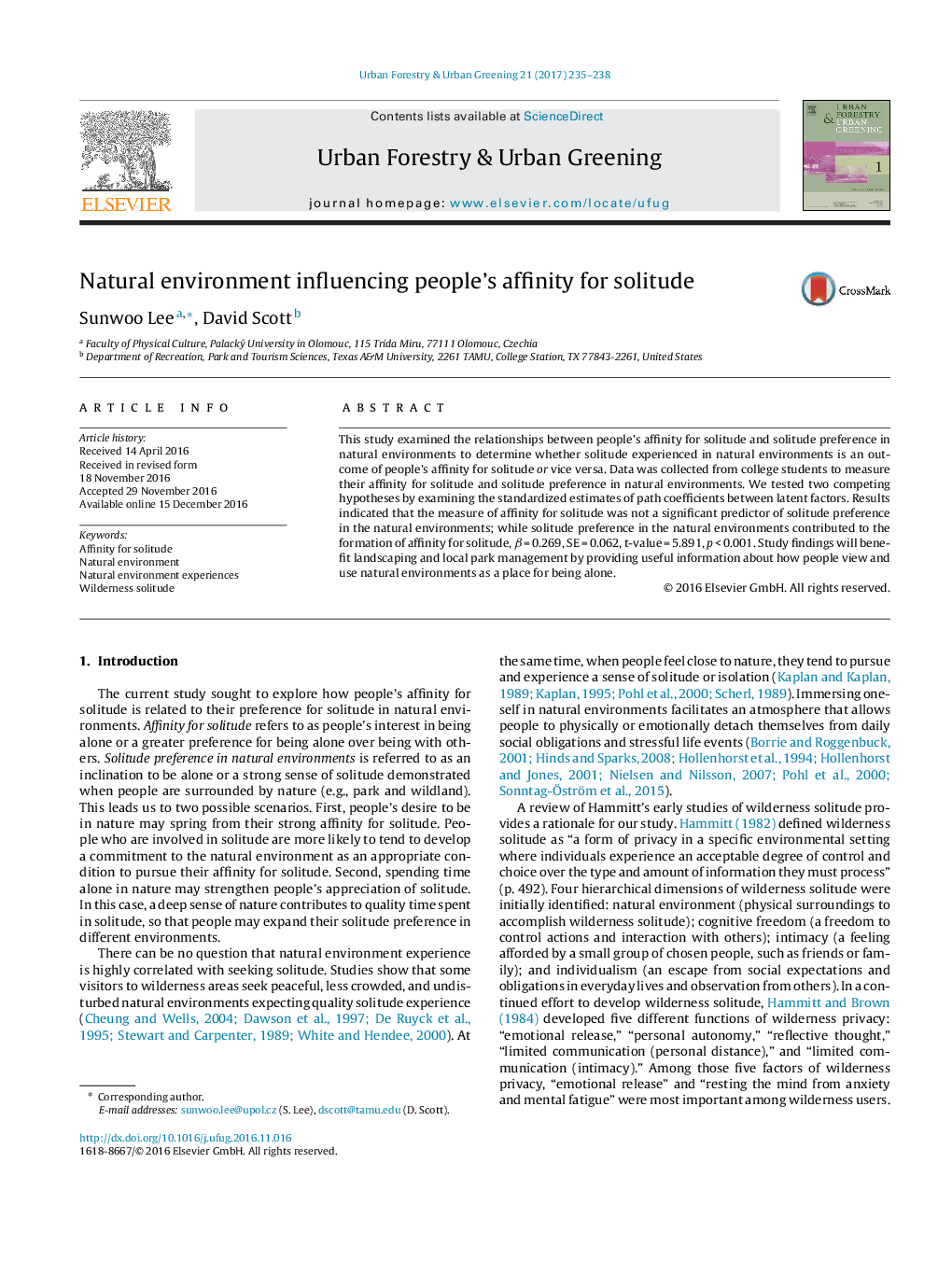| Article ID | Journal | Published Year | Pages | File Type |
|---|---|---|---|---|
| 6461679 | Urban Forestry & Urban Greening | 2017 | 4 Pages |
This study examined the relationships between people's affinity for solitude and solitude preference in natural environments to determine whether solitude experienced in natural environments is an outcome of people's affinity for solitude or vice versa. Data was collected from college students to measure their affinity for solitude and solitude preference in natural environments. We tested two competing hypotheses by examining the standardized estimates of path coefficients between latent factors. Results indicated that the measure of affinity for solitude was not a significant predictor of solitude preference in the natural environments; while solitude preference in the natural environments contributed to the formation of affinity for solitude, β = 0.269, SE = 0.062, t-value = 5.891, p < 0.001. Study findings will benefit landscaping and local park management by providing useful information about how people view and use natural environments as a place for being alone.
